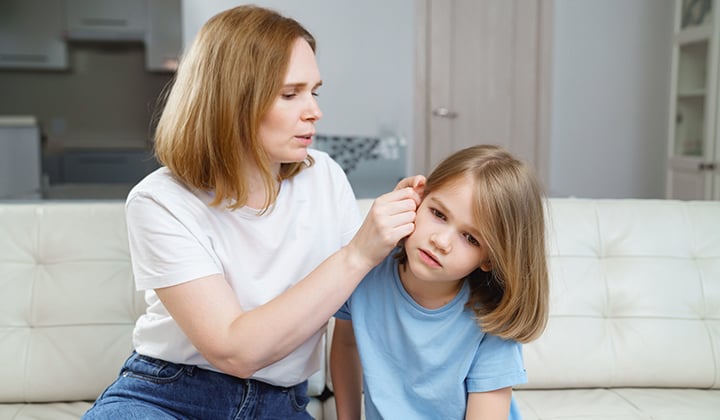
Let’s set the scene - you look over at your kid and there’s a bunch of earwax in their ear. You may feel immediate panic to clean it out. There’s no way you can let them walk around like that. So, you run to get the cotton swabs you know you shouldn’t use. But, before you do anything, here’s the No. 1 rule about cleaning out earwax.
Leave it alone. No, seriously.
When it comes to earwax, leave it alone. Earwax is healthy. It acts as a protection to the ear canal. Earwax helps stop infections and helps keep things out of our ears. The No. 1 rule about cleaning earwax is to never stick anything inside of the ear. Putting anything inside the ear can cause damage, pain, and possibly hearing loss.
What is earwax?
The medical term for earwax is cerumen. It’s made from glands in the ear canal and helps to protect the ear from germs, dust, dirt and other particles that could hurt the eardrum. Earwax can look goopy inside the ear and flaky as it comes out. Healthy earwax in children is typically a yellow or orange color.
How to clean earwax
We covered the No. 1 rule – do not stick anything in kids’ ears. A general rule of thumb is don't put anything smaller than your elbow in your ear. Which, is actually pretty big when you think about it.
So, how do you clean earwax then? Whenever you see the earwax, take a warm, wet washcloth and wipe around the ear canal – the outside of the ear – to remove any wax that has come out. Keep in mind to only remove the wax you can easily see and reach, making sure to not stick anything in the ear. Wax on the inside of the ear will naturally move to the outside through with the skin of the ear canal and jaw movements like chewing.
If there seems to be a heavy buildup of wax, your pediatrician can take a look or refer you to a specialist for help.
What about different ways to remove earwax?
In general, it’s best to leave earwax alone. A medical professional should remove a big buildup of earwax only if it is causing problems – like hearing loss. Some children will need to have appointments with a doctor regularly if they produce a lot of earwax. Here are some earwax methods you may have heard about and the risks for each.
- Cotton swabs – You may see on the box these types of swabs are not meant for ear cleaning. These swabs push the wax further into the ear and can hurt your child’s eardrum.
- Candles – This method claims to remove earwax by heating a wax candle and letting the smoke create a vacuum to soften and loosen any wax. These ear candles actually don’t work and can cause burns.
- Ear drops – Some drops help to soften, or breakdown wax. Ear drops are typically a safer option because you’re not sticking an object into the ear. If ear drops are needed often, you may want your child’s pediatrician to evaluate if other steps are needed.
- Irrigation with a syringe – This method uses hydrogen peroxide to soften the wax and then water to push earwax out of the ear canal. It can be difficult to know how much pressure to use on a child’s ear and can lead to hurting the eardrum.
- Scrapers with camera app – You may have seen the new products on the market selling an earwax scraper with a camera attached so you can see what you’re scraping on your phone. These are risky to use on children because it’s hard to get a sense of how far is too far on someone else’s ear. You may be risking causing ear damage.
It may feel unnatural to just sit back and let your kid make and shed their own earwax, but remember, it is natural. Earwax is healthy! It’s good for them, and as a reminder - never ever stick anything inside the ear.
Related article:

